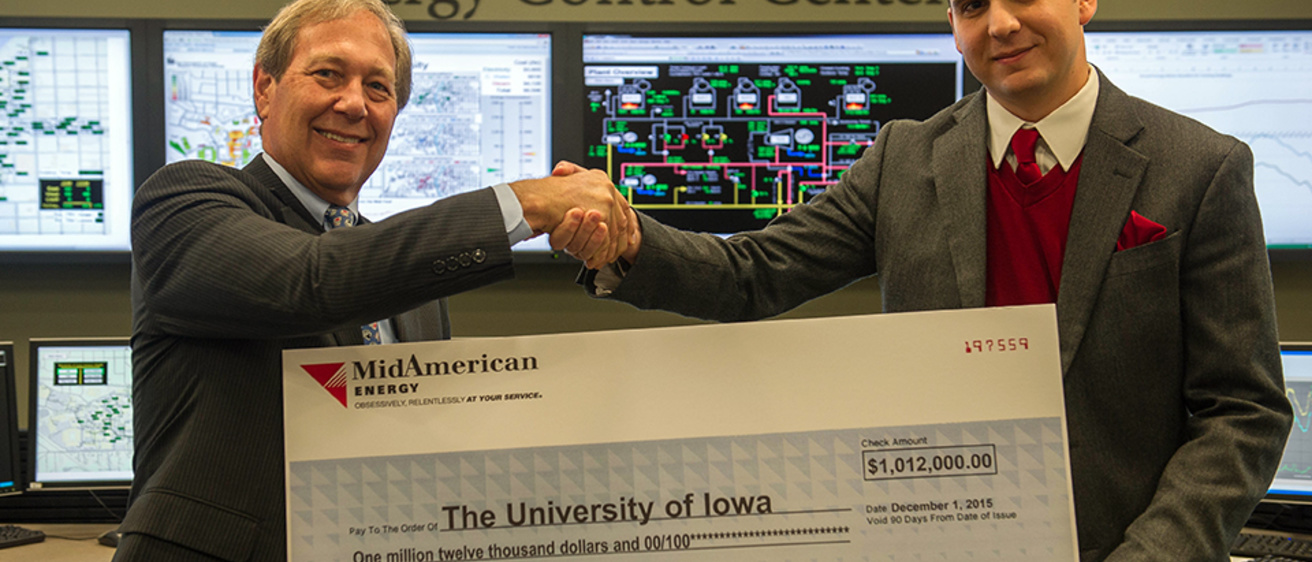The University of Iowa has received more than $1 million through an incentive program from MidAmerican Energy Co., which will be reinvested into the university’s energy efficiency and conservation programs.
Don Guckert, associate vice president and director of facilities management, says the incentive is the result of the university lowering on-campus energy demand and altering production at its power plant during some of the hottest days of summer, all as part of its participation in MidAmerican Energy’s curtailment program.
“During a curtailment event, the university is asked to reduce its use of electric demand from the power grid by generating more of its own power, shifting the production of chilled water away from electric-driven units, and reducing electric consumption in participating buildings for up to six hours at a time,” says Guckert. “Doing so helps MidAmerican Energy manage electrical load during peak demand periods, so they can avoid purchasing expensive power from other suppliers and the need to construct additional infrastructure."
He says the university may be called upon to curtail up to 16 times between June 1 and Sept. 30. Incentives from this and other programs are reinvested into energy efficiency and conservation measures for both buildings and the campus utilities system. In turn, these programs have contributed to continued reductions in campus energy consumption, despite the addition of several new buildings. As a result, Guckert says that during the most recent 12-month period, energy use was nearly 4 percent below 2010 levels, putting the university on track to meet or exceed its 2020 sustainability target—consuming less energy on campus in 2020 than used in 2010 despite projected growth. The energy demands for the nine new buildings or major additions opened since 2010 have been offset by these conservation efforts.
The university has participated in the curtailment program each year since 1998, but this is the first time it’s topped the $1 million incentive mark. The full rebate value is $1,012,000.
Guckert says curtailment events are achieved through managing the demand on campus and by altering production. On the demand side, building occupants are notified to power down lights, computers, and other power-consuming devices where possible. On the production side, the university benefits from an enviable diversity of fuel sources and production methods. UI’s critical production equipment—boilers, generators, and chillers—utilize a variety of fuel and energy sources that allows the university to shift into different operating modes as needed.
During normal operations, the UI’s energy control center produces and distributes energy with a mix that optimizes efficiency and minimizes costs. If MidAmerican Energy calls for a curtailment, university staff examine data analytics to alter that mix in a way that, though increasing costs during short time windows, is more than offset by the rebate received from MidAmerican Energy.
Guckert says that in addition to the curtailment program, the UI is an active participant in several of MidAmerican Energy’s Energy Advantage programs, including the Commercial New Construction program that provides incentives for energy efficient design, primarily in new construction and renovations. The UI has received more than $3 million in incentives over the course of its participation in that program. The university has received rebates totaling more than $2.5 million in support of energy efficient upgrades to existing buildings.
